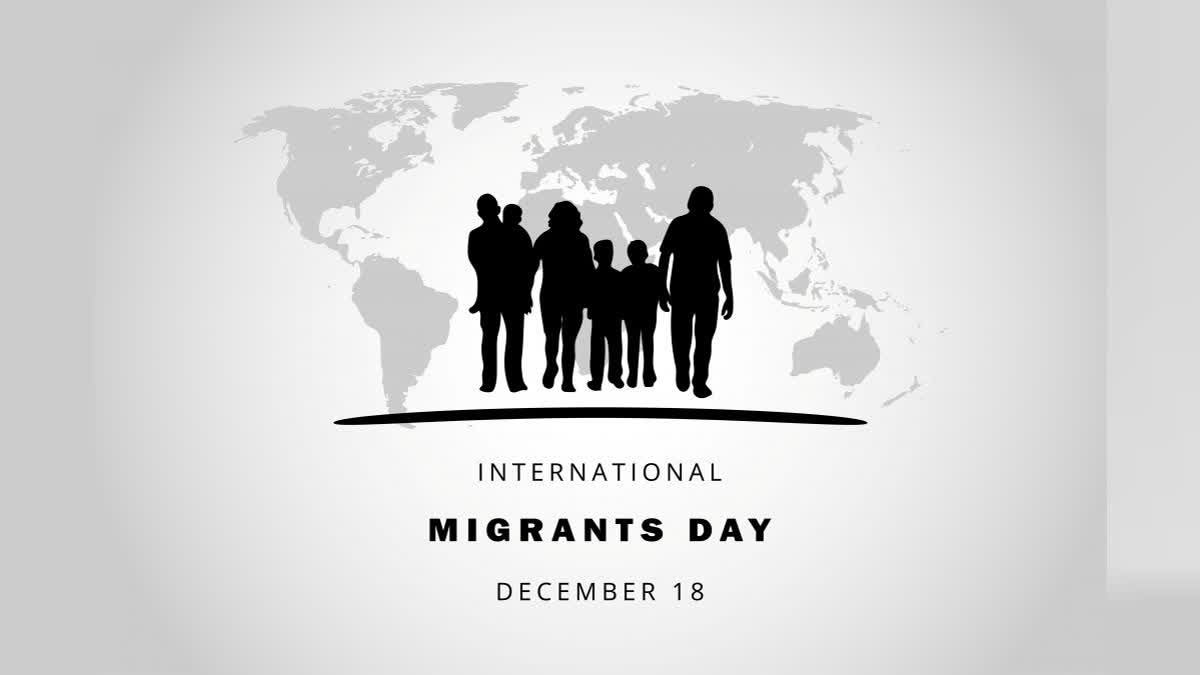International Migrants Day is annually observed on December 18. The day commemorates the adoption of the International Convention on the Protection of the Rights of All Migrant Workers and Members of Their Families. A migrant is an individual who is relocating or has relocated across an international boundary or within a state, departing from their usual place of residence, As per the International Organization for Migration.
On December 4, 2000, the UN General Assembly (UNGA) designated 18 December as International Migrants Day, taking into account the large and increasing number of migrants in the world. Through its resolution A/RES/55/93, the UNGA invited Member States and others to observe the Day through the dissemination of information on human rights and fundamental freedoms of migrants, the sharing of experiences, and the design of actions to ensure the protection of migrants.
The UNGA chose 18 December for the Day to mark the anniversary of the 1990 adoption by the UNGA of the International Convention on the Protection of the Rights of All Migrant Workers and Members of their Families.
Background
Migration is a global phenomenon driven by many factors. These start with aspirations for safety, dignity and peace. The decision to leave home is always difficult, and, too often, the beginning of a dangerous, sometimes fatal journey. The International Organization for Migration (IOM) has assisted millions of migrants since it emerged 70 years ago to assist the vast number of Europeans displaced by the Second World War and continues to lead the way in promoting a humane and orderly management of migration for the benefit of all, including the communities of origin, transit and destination.
International Migrants Day Theme
This year International Migrants Day theme is "Honouring the Contributions of Migrants and Respecting Their Rights," according to the World Health Organisation. This theme highlights the importance of acknowledging migrants contributions to society and ensuring their rights are respected.
Global Migration Group (GMG)
The Global Migration Group (GMG) was an inter-agency group established by the United Nations Secretary-General, bringing together the heads of relevant UN agencies working on migration. The GMG was established by the United Nations Secretary-General in early 2006 in response to a recommendation of the Global Commission on International Migration for the establishment of a high-level inter-institutional group of agencies involved in migration-related activities.
The GMG was created by building on an existing inter-agency group with a more limited membership, the Geneva Migration Group, which was established in April 2003 and included ILO, IOM, OHCHR, UNCTAD, UNHCR and UNODC. The first meeting of the GMG took place on 9 May 2006 and was chaired by Secretary General of UNCTAD. The GMG met at regular intervals, and the Chair was held on a rotating basis by the executive heads of its member organizations.
Forms and Patterns of Migration:
Internal migration:When migration occurs within a country, and can be categorised based on origin and destination, encompassing rural-urban migration, intra-state, and inter-state migration.
External or International Migration: External migration, involves individuals or families moving from one country to another and can be driven by various factors, including economic opportunities ( Like Indian IT professionals in the US, Europe or construction workers in GCC nations or Gulf countries ), education, family reunification, or seeking asylum from persecution or conflict (Rohingya in Bangladesh).
1. Emigration from country to various parts of the world.
2. Immigration of people from different countries to India.
Forced migration:Forced migration occurs when individuals or families are compelled to move due to factors like war, persecution, or natural disasters.
Voluntary migration:When families choosing to relocate, often driven by better economic prospects or a desire for an improved quality of life known as Voluntary migration
Temporary migration:It is intended to be of short time duration, such as seasonal or temporary work, whereas permanent migration involves settling permanently in a new location.
Reverse migration: When individuals or families returning to their country of origin or original place of residence after previously migrating elsewhere.
Migration in India Statistics
